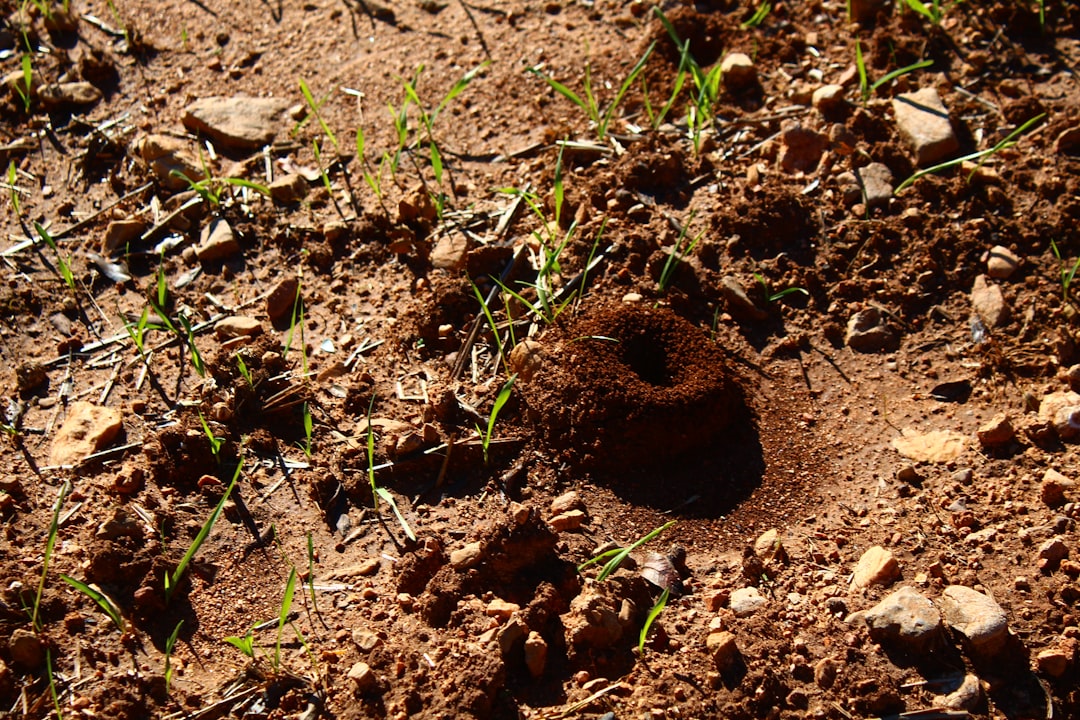When we think of ecosystems, we often picture lush forests, vast oceans, or buzzing meadows. But one of the most complex and vital ecosystems lies just beneath our feet: the soil. Far from being just "dirt," healthy soil is alive with billions of organisms working behind the scenes to support life on Earth.
This rich underground world plays a crucial role in everything from growing our food to regulating the climate. In this post, we’ll dig into the fascinating ecology of soil health—why soil organisms matter, how they interact, and what we can do to protect this essential resource.
🌍 What Is Soil Ecology?
Soil ecology is the study of the interactions among soil organisms and their environment. Soil is more than a mixture of minerals and organic matter—it's a living, breathing community. A single teaspoon of healthy soil can contain more living organisms than there are people on the planet.
These organisms—ranging from microscopic bacteria and fungi to earthworms and insects—form complex food webs and carry out essential functions like decomposing organic material, cycling nutrients, building soil structure, and even protecting plants from disease.
🐛 Who Lives in the Soil?
Soil biodiversity is vast and incredibly diverse. Let’s meet some of the key players:
1. Bacteria
-
Tiny but mighty, these microorganisms break down organic matter and help release nutrients like nitrogen and phosphorus.
-
Some bacteria form symbiotic relationships with plant roots (like nitrogen-fixing Rhizobium in legumes).
2. Fungi
-
Fungi decompose tough organic material like wood and leaves.
-
Mycorrhizal fungi form networks with plant roots, increasing their access to water and nutrients.
3. Protozoa and Nematodes
-
These microscopic organisms feed on bacteria and fungi, helping to regulate populations and release nutrients.
-
Some nematodes are pests, but many are beneficial to soil health.
4. Earthworms
-
Often called “ecosystem engineers,” earthworms improve soil structure by burrowing, which increases aeration and drainage.
-
Their waste (called worm castings) is rich in nutrients.
5. Arthropods (insects, mites, etc.)
-
These help break down organic matter and mix it into the soil.
-
They also prey on pest species, helping maintain balance.
🌿 Why Soil Organisms Matter
Soil organisms perform vital functions that benefit plants, ecosystems, and even human health:
🧬 Nutrient Cycling
-
Decomposition of organic matter releases nutrients that plants need to grow.
-
Soil microbes transform nutrients into forms that plants can absorb.
🪨 Soil Structure and Aeration
-
Earthworms and insects create channels that improve water infiltration and root growth.
-
Fungal hyphae help bind soil particles together, reducing erosion.
🌱 Plant Growth and Health
-
Microbial communities enhance plant nutrient uptake and protect roots from pathogens.
-
Healthy soils support stronger, more resilient plants.
💧 Water Retention and Filtration
-
Soils rich in organic matter retain more water, making them drought-resistant.
-
They also act as filters, breaking down pollutants and improving water quality.
🌎 Carbon Storage
-
Soil is one of the planet’s largest carbon sinks.
-
Soil organisms help sequester carbon by turning plant residues into stable organic matter.
🛠️ Threats to Soil Health
Despite its importance, soil health is under threat from human activities:
-
Tillage and erosion break down soil structure and disrupt microbial communities.
-
Chemical fertilizers and pesticides can harm beneficial organisms and reduce biodiversity.
-
Monocultures limit diversity in both plants and soil organisms.
-
Compaction from heavy machinery reduces air and water flow in soil.
-
Pollution and contamination damage microbial communities and reduce fertility.
🌾 How to Support Soil Ecology
Protecting and enhancing soil life is essential for sustainable agriculture and ecosystem health. Here’s how:
✅ Use Cover Crops
-
Planting cover crops during off-seasons reduces erosion and adds organic matter.
✅ Minimize Tillage
-
Reducing or eliminating tillage helps preserve soil structure and protect organisms.
✅ Add Organic Matter
-
Compost, mulch, and manure feed soil microbes and improve fertility.
✅ Encourage Plant Diversity
-
Diverse crops support diverse soil organisms and build a more resilient system.
✅ Avoid Excessive Chemicals
-
Use natural or targeted pest control methods to avoid harming non-target soil life.
✅ Protect Soil From Erosion
-
Keep soil covered with plants or mulch to prevent wind and water erosion.
🌎 The Bigger Picture
Healthy soil is the foundation of life on land. It supports agriculture, buffers climate extremes, and sustains biodiversity. Yet, soil ecosystems often go unnoticed and underappreciated.
By understanding the ecology of soil health, we begin to see that what happens below the surface shapes everything above it. From a backyard garden to a global food system, supporting soil life means supporting life itself.
🪱 Final Thoughts
The next time you walk on the ground, take a moment to appreciate the universe beneath your feet. In every handful of healthy soil is a bustling, living network doing the quiet but essential work of keeping the planet thriving.
Let’s care for it. Let’s respect it. And most importantly—let’s not take it for granted.
🌿 Got compost? Ever tried no-till gardening or using cover crops? Share your soil-building tips or experiences in the comments!

Comments
No comments yet. Be the first to comment!
You must be logged in to comment. Login